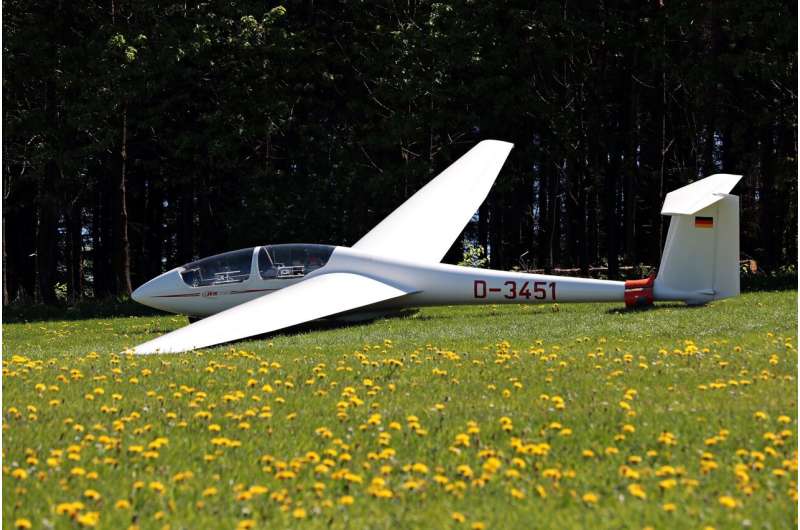This article has been reviewed according to Science X's editorial process and policies. Editors have highlighted the following attributes while ensuring the content's credibility:
fact-checked
peer-reviewed publication
trusted source
proofread
Search and rescue system using a fixed-wing unmanned aerial vehicle

Conventional search and rescue operations after major disasters face many problems. A team from Malaysia writing in the International Journal of Vehicle Autonomous Systems, now suggests a practical solution that involves a real-time human detection system using a fixed-wing Unmanned Aerial Vehicle (UAV).
Cheok Jun Hong and Vimal Rau Aparow of the University of Nottingham Malaysia, in Selangor and Hishamuddin Jamaluddin of Southern University College in Skudai, Johor, Malaysia, have brought together UAV technology with readily available small-scale tools such as the Raspberry Pi computer. This allows them not only to better manage system functions than with conventional technology but also to stream aerial imagery from an attached camera.
What makes this novel approach particularly attractive is the ability to offload the computationally intensive human detection tasks to a server at the edge, enabled by 4G cellular network technology. The team explains that the server employs the YOLOv3 deep neural network, trained on VisDrone and SARD datasets, and can precisely identify people from the images gathered by the UAV's camera and transmit results to ground control. With a positive identification, a rescue team can then be sent to the exact spot where a rescue is needed.
The system brings together deep learning algorithms and mobile-edge computing and represents a shift away from conventional search and rescue approaches that could speed up the whole process during a major incident. There are also benefits to precluding the need for manned aircraft or people to cover a lot of ground in hazardous environments.
The team explains that their convolutional neural network with the YOLOv3 architecture can achieve a mean Average Precision (mAP) of almost 80% for identifying people in the images from the UAV camera. By using the TensorRT toolkit the researchers can further optimize the approach and speed up inference by some three times when compared with the original neural network but without loss of accuracy. Of course, while the system can have a greater range than a radio-enabled system, it does rely on the stability and existence of the 4G network across the search and rescue area.
The researchers initially designed the system for human search and rescue scenarios, but it could be adapted to other applications, such as public safety and crime prevention. It could be repurposed for patrolling a site vulnerable to criminal activity or even used in tracking criminals.
More information: Cheok Jun Hong et al, Real-time human search and monitoring system using unmanned aerial vehicle, International Journal of Vehicle Autonomous Systems (2024). DOI: 10.1504/IJVAS.2023.136180



















